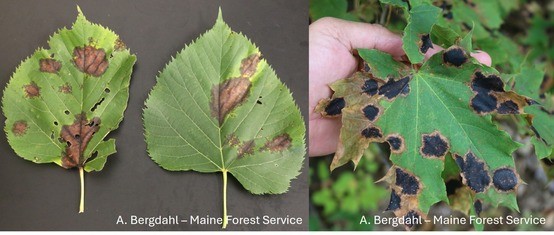Normally, I would tell folks to #LeaveTheLeaves, but if they are infected with #FungalDisease, it's best to dispose of them in the trash (or burn them, but not with #Drought conditions).
"Late-Season Leaf Spots and Blotches
If the leaves of trees look a bit ragged at this time of year, that’s because they have made it through an entire growing season of biotic attacks from insects and disease and potentially adverse abiotic conditions (non-living conditions related to weather, mechanical damage). The good news is the leaves have made it this far and they have achieved a large proportion of the work (photosynthesis) they were intended to do. Thus, even unsightly late-season leaf spots and blotches are of minor concern. Thankfully, we can begin the process of minimizing leaf damage next year by our actions in the coming months. In addition to late-season leaf spots and blotches, many more damaging fungal leaf pathogens can be present on leaves this time of year that never expanded or spread due to host defenses or dry weather conditions. So, cleaning up and removing dead and shed plant material in fall is a good way to limit sources of infection for next year. This is of course not practical in forest settings. In such cases it is worth remembering that native fungal pathogens are an ever-present, natural part of Maine’s forest ecosystem that only represent a problem when host susceptibility and environmental conditions combine in such a way to cause disease."
Source: Email newsletter from the #Maine Department of Agriculture, Conservation and Forestry




 🇺🇸
🇺🇸